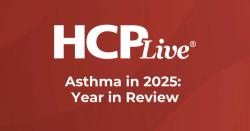
OR WAIT null SECS
Breathlessness in Patients with COPD isn't Reduced with Daily Morphine
Neither intervention group demonstrated any significant improvements in intensity of chronic breathlessness after taking regular, low-dose, extended-release morphine.
Patients with chronic obstructive pulmonary disease (COPD) often experience chronic breathlessness. A new study aimed to evaluate if regular, low-dose, extended-release morphine is effective in mitigating this common symptom and determine what dose would be best for this population.
The team assessed how different doses of extended-release morphine would affect patients with COPD after 1 week of treatment who experience extreme breathlessness.
This symptom can restrict daily activities for patients and often results in lower levels of physical activity and muscular and cardiovascular deconditioning which perpetuates the effects of the symptom. Anxiety and depression, reduced health-related quality of life, and increased need for healthcare services and mortality is also associated with chronic breathlessness.
For this research, Magnus Ekström, MD, PhD, Faculty of Medicine, Department of Clinical Sciences, Respiratory Medicine, Allergology, and Palliative Medicine, Lund University, and investigators defined chronic breathlessness as "breathlessness at rest or with low levels of exertion that persists despite optimal treatment for the underlying conditions, affects many people with chronic obstructive pulmonary disease (COPD)."
The Study
The primary outcome of the investigation was the change in intensity of worst breathlessness on a numerical rating scale from none to the most intense (0-10). This was according to the mean score at baseline compared with the mean score after the first week of treatment in the group receiving 8 mg/d and 16 mg/d of extended-release morphine groups.
These groups were then compared to a control group and analyzed for differences. Secondary outcomes included the change in daily step count measured by an actigraphy device from baseline, and compared with the mean step count from week 3.
The mutlicenter, double-blind, placebo-controlled randomized clinical trial included 156 patients with COPD experiencing chronic breathlessness at the completion of the study period. Patient data of those entrolled between September 2016-November 2019 were collected from 20 centers in Australia.
The Results
Ultimately, the data did not reveal any significant reduction in levels of breathlessness after daily low-dose, extended-release morphine after a week of treatment. Neither the 8 mg/d intervention group nor the 16 mg/d intervention group demonstrated any significant improvements in intensity of chronic breathlessness.
The secondary outcomes failed to yield significant associations. The difference in mean daily step count was not clinically meaningful at week 3 when comparing any of the intervention groups to the control group.
However, investigators noted several limitations with the first being the decreased number of participating patients in each group over the 3 week intervention period. By week 3 only 42% had completed treatment. The study was acurately powered for the primary outcome and the recruited the target number of people, nonetheless.
Also, measurements of breathlessness were done in daily life and not during standardized exercise testing. Finally, the team noted that extended-release morphine can be administered every 23-24 hours and this study opted for a 24 hour dosing interval which could have been suboptimal compared with a 12 hour schedule.
"Among people with COPD and severe chronic breathlessness, daily low-dose, extended-release morphine did not signifi- cantly reduce the intensity of worst breathlessness after 1 week of treatment," investigators concluded. "These findings do not support the use of these doses of extended-release morphine to relieve breathlessness."
The study "Effect of Regular, Low-Dose, Extended-release Morphine
on Chronic Breathlessness in Chronic Obstructive Pulmonary Disease The BEAMS Randomized Clinical Trial" was published in JAMA.


